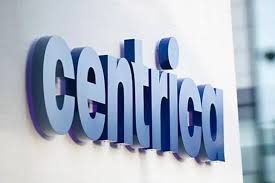Syncona Limited (SYNC.L), a prominent player in the asset management industry, has piqued the interest of investors with its unique focus on healthcare and life sciences sectors. With a current market capitalisation of $545.95 million, Syncona operates within the financial services sector in the United Kingdom, offering a distinctive investment approach that combines hedge, equity, and alternative investment funds. As we delve into the financials, performance metrics, and analyst sentiments, investors may find a complex yet potentially rewarding picture.
Syncona’s share price currently stands at 88.9 GBp, reflecting a slight decrease of 0.80 GBp (-0.01%). This current valuation is near the lower end of its 52-week range of 81.80 to 128.40 GBp, indicating a period of price volatility. This fluctuation is not uncommon in the asset management sector, particularly for companies engaged in high-stakes investments like Syncona, which specialises in cell therapy, gene therapy, and biologics.
One of the most striking aspects of Syncona’s financials is its forward P/E ratio of 249.73, a figure that suggests high expectations for future earnings despite the lack of a trailing P/E ratio. This discrepancy highlights the speculative nature of investing in a company with a focus on cutting-edge sectors such as life sciences, where the timeline for returns can be unpredictable. The absence of data on revenue growth, net income, and other valuation metrics further underlines the challenges in assessing the company’s immediate financial health.
Despite these uncertainties, Syncona has managed to secure three buy ratings from analysts, with no sell ratings, suggesting a degree of confidence in the company’s long-term strategy. The average target price of 225.00 GBp indicates a substantial potential upside of 153.09%, a figure that may intrigue risk-tolerant investors seeking growth opportunities in innovative sectors.
However, the company faces significant challenges. Its negative EPS of -0.03 and a return on equity of -1.50% may raise concerns about profitability and efficiency. Additionally, the free cash flow stands at a negative -9,512,750.00, a factor that could impact Syncona’s ability to invest in new opportunities or weather economic downturns.
On the technical front, Syncona’s 50-day moving average is 90.49, slightly above the current price, while the 200-day moving average is 104.75, suggesting a longer-term downtrend. The Relative Strength Index (RSI) of 44.79 indicates that the stock is neither overbought nor oversold, offering no clear signal for momentum investors. Meanwhile, the MACD and Signal Line values (-1.18 and -1.78, respectively) suggest bearish sentiment in the near term.
Dividend-seeking investors might find Syncona less appealing, as the company currently offers no dividend yield, with a payout ratio of 0.00%. This lack of dividend income underscores the company’s strategy of reinvesting earnings to fuel growth in its specialised sectors.
For investors considering Syncona, the potential rewards must be weighed against the inherent risks associated with investing in rapidly evolving industries. The company’s focus on healthcare and life sciences aligns with global trends towards innovative medical solutions, yet the financial metrics indicate a company in the midst of development rather than mature profitability. As such, Syncona Limited presents an intriguing opportunity for those with a long-term investment horizon and a tolerance for volatility.




































